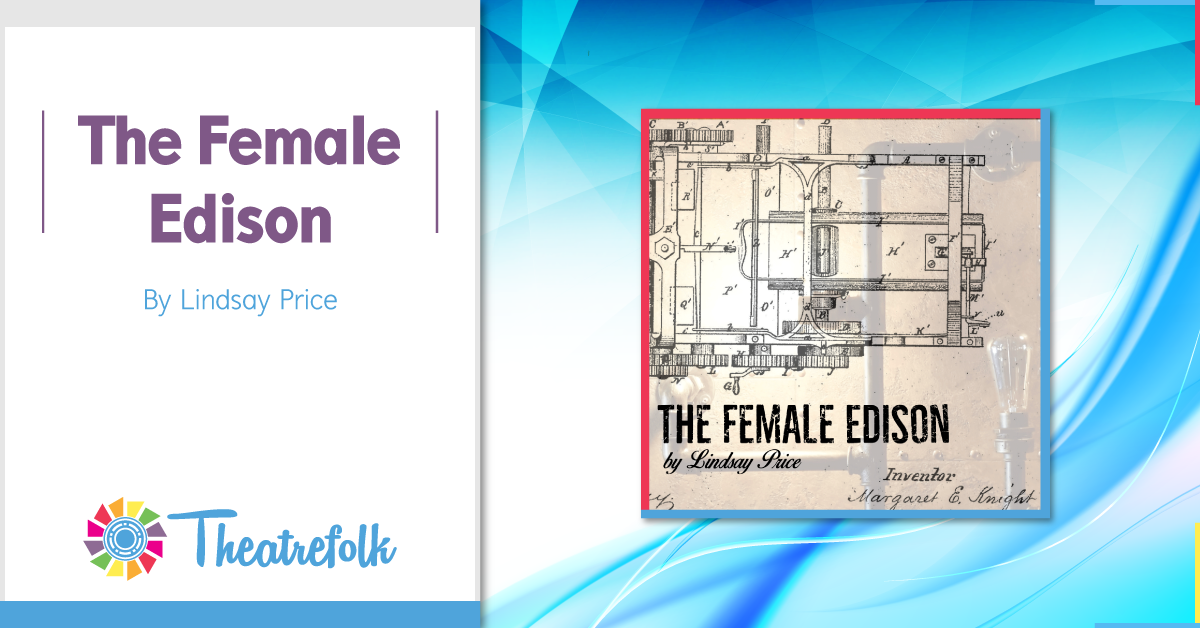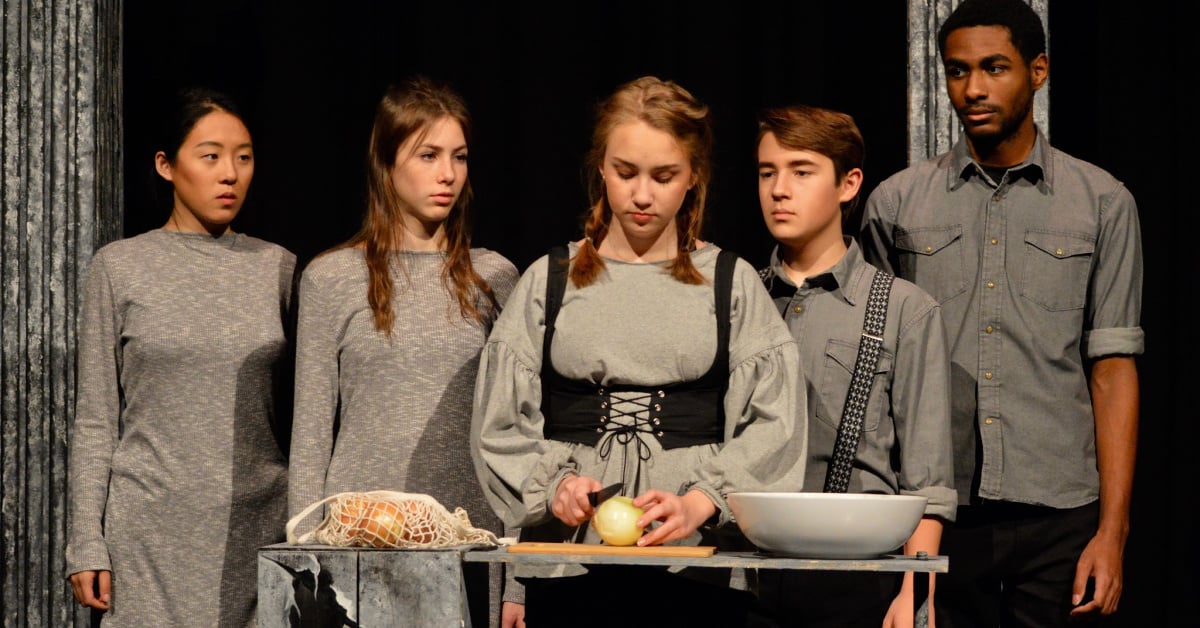Agatha Rex by Lindsay Price is a bold high school take on Antigone - packed with heart, conflict, and a powerhouse ensemble. One girl. One stand. One huge risk. *NEW COMPETITION VERSION AVAILABLE!*
Theatrefolk Featured Play: The Female Edison
Welcome to our Featured Play Spotlight. The Female Edison by Lindsay Price is an incredible ensemble piece with something for everyone!
Margaret E. Knight was a 19th century inventor with two big but forgotten stories.
At 12 years of age, while working at a textile factory, she invented a part to improve the safety of a power loom. How did she not only get mill management to listen to her idea but implement it?
As an adult, she invented a machine to mass-produce flat bottom paper bags. This invention was eventually stolen from her so she hired a lawyer to take the case to court. The defense was that “there is no way a woman could have invented this.” How did Margaret persist and secure her place in the annals of invention?
NOTE: There are also two independent one-act versions of the script available that can both be performed without any knowledge of the other: Patterns & Power: The Female Edison and Failure & Fortitude: The Female Edison.
Let's hear from the author!
1. Why did you write this play?
A lot of times I go down rabbit holes of research because of some observation that came across my world view. That's what happened which led me to Margaret E. Knight and her paper bag machine invention. There isn't a lot about her online, but everything I read made me excited to share her story theatrically.
2. Describe the theme in one or two sentences?
Failure and fortitude are the touchstones for every inventor, but even more so for 19th century female inventors.
3. What's the most important visual for you in this play?
I love seeing the 19th century machines come to life through actors. I knew, writing this for schools and student performers that any of the machines would have to be actor driven rather than actual set pieces. It took a long time in my research to figure out how to turn a power loom into three different action sets and how to turn Margaret's mass-produced paper bag machine into action. But I love the results.
4. If you could give one piece of advice for those producing the play, what would it be?
There's a lot of ensemble work in this play and a lot of moving pieces as actors enter and exit. The more you practice transitions the smoother the flow of the piece will be. Also, don't be put off by the number of traditional male roles. It is my intention that the majority of the roles are played by the actors who best suited for the role regardless of their gender.
5. Why is this play great for student performers?
It has everything! Some history, characters fighting and succeeding through great adversity - I mean, someone tried to steal Margaret's patent for the paper bag machine to the point that she had to go to court and get it back. In a time period when a married woman wasn't even allowed to put her own name on a patent, the fact that she won her case is remarkable. Further to that, there is so much ensemble opportunity in the play. You can really expand the cast size if you want.
6. Who is your favourite character in the play? OR Which character would you be in this play?
Margaret all the way! I love her story. She had everything against her: no schooling, no desire to be "normal" in an era that really required women to be and act in a certain way, and in court, the man who stole her patent said that "there was no way a woman could have understood such mechanical complexities" And yet she still persevered.
7. What is your favourite line in the play?
"I am not a cog in any machine."



